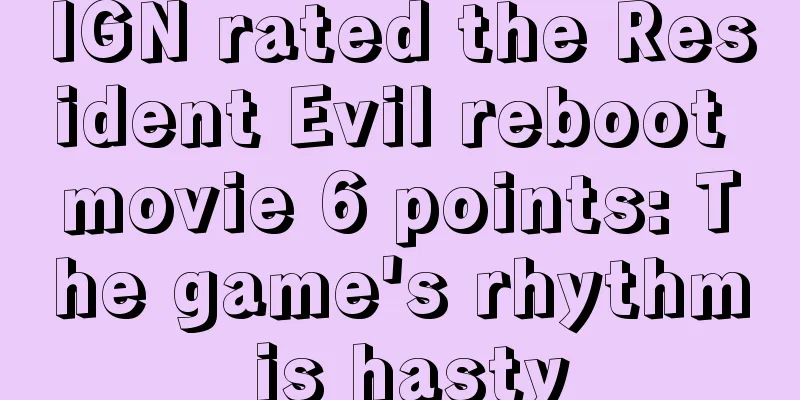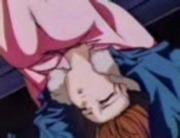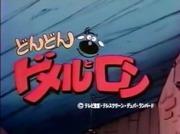"Let's Dance in a Circle": A thorough analysis of the appeal and emotion of this song for everyone

"Let's Dance in a Ring": The appeal of NHK's historical short animation"Let's Dance in a Ring" is a short anime that was broadcast on NHK Educational TV (now NHK E-Tele) in 1965. This work was produced as part of NHK's long-running program "Minna no Uta" and made a strong impression on viewers in its short two-minute run. In this article, we will explore the appeal of this historical anime, its background, and its current reputation. Overview"Let's Dance in a Ring" was broadcast in April 1965. The original work is listed as "Other", which indicates that it is an original work of "Minna no Uta". Although it is a very short work, only two minutes long and with only one episode, the content is very dense and it deeply moved the audience. It was produced by the Kakashiza studio and is drawn in a unique style of silhouette animation. The copyright is held by NHK, and it can still be viewed in the official NHK archives. Story and ThemesThe story of "Let's Dance in a Circle" is very simple. This work depicts animals dancing in a circle, symbolizing the power of friendship and unity. By using silhouette animation, the movements of the animals are expressed more dynamically, and the viewer is naturally drawn into the rhythm. The theme of the film emphasizes the importance of everyone having fun together. Japan was in the midst of a period of rapid economic growth in the 1960s, and people were busy working, meaning they had less time to spend with family and friends. Against this backdrop, this film made viewers realize the value of "having fun together." Production background and technology"Let's Dance in a Circle" was produced as part of NHK's "Minna no Uta" program. "Minna no Uta" is a children's music program that began broadcasting in 1961, and introduces new songs and animations every month. The program aims to develop rich sensibilities in children through music, and has produced many masterpieces. Silhouette animation was a very innovative technique at the time. Silhouette animation is a technique that uses black silhouettes to express characters, emphasizing the background and movement. This technique was used to maximize the visual impact, and it succeeded in creating works that were strongly remembered by the viewer. The production company, Kakashi-za, is a Japanese theater company that has been active since the 1950s and has produced many works using silhouette animation techniques. "Let's Dance in a Circle" is one of these works, and it can be said to be a work that brings together Kakashi-za's technical ability and artistry. Music and lyricsThe music for "Let's Dance in a Circle" was written by composer Yoshinao Nakata. Yoshinao Nakata was a composer active in postwar Japan, and has written many children's songs and folk songs. His music is known for being familiar to children and deeply moving. The lyrics were written by Michio Yamagami, a lyricist who wrote many children's songs and folk songs in postwar Japan, and his lyrics are highly regarded for resonating with children. The lyrics of "Let's Dance in a Ring" were also enjoyable for children to sing along with, and made a strong impression on viewers. Audience reactions and impact"Let's Dance in a Circle" has been loved by many viewers since it was first broadcast. Children in particular were fascinated by the rhythm and movement of this piece, and enjoyed dancing in a circle themselves. The show also gave parents the opportunity to spend time enjoying themselves with their children, deepening family bonds. This work had a major impact on Japanese society in the 1960s. During the period of rapid economic growth, people were busy with their daily lives and had less time to spend with family and friends, so this work reminded people of the value of "having fun together." Furthermore, the innovative technique of silhouette animation maximized the visual impact and succeeded in creating a work that would leave a strong impression on the viewer's memory. Modern Recognition"Let's Dance in a Circle" is still loved by many viewers today. It can be viewed on the NHK official archive, and many fans have shared the work on the Internet. It has also been highly praised by music and animation experts, and the technique of silhouette animation and the beauty of the music have been reevaluated. This work reflects the values and culture of Japanese society in the 1960s, and is a valuable historical resource for modern audiences. Furthermore, the spirit of "Minna no Uta," which aimed to develop rich sensibilities in children, is still passed down to many viewers today. Recommendations and related worksFor viewers who enjoyed "Let's Dance in a Circle," we also recommend the following works. These works were also produced as part of NHK's "Minna no Uta" program, and allow you to enjoy the beauty of music and animation.
These works can also be viewed in the official NHK archives, so be sure to check them out. Also, NHK's "Minna no Uta" is a program where new songs and animations are introduced every month, so there are always new discoveries to be made. Aiming to develop rich sensibilities in children, this program is valuable content that the whole family can enjoy. Conclusion"Let's Dance in a Ring" is a short animated film that was broadcast on NHK Educational TV in 1965, and made a strong impression on viewers in its short two minutes. The film is drawn in a unique style of silhouette animation, and symbolizes the power of friendship and unity. Reflecting the values and culture of Japanese society in the 1960s, the film is still loved by many viewers today and is highly regarded by music and animation experts. Please watch this historic film and experience its charm. |
>>: Review of "Song of the River": What is the appeal of Minna no Uta?
Recommend
"The Golden Law" Review: A Captivating Story and Character Depth
The Golden Law - Ogonnoho - Movie Reviews and Rec...
The final episode is coming! The visual image of the 13th episode of TV animation "Invasion" is released
According to the official Twitter of the TV anima...
Spider-Man: No Return surpasses Avatar in North American box office, ranking third in film history
Spider-Man: No Homecoming earned another $1.6 mil...
Lady Gaga looks so good in the new set photos of Joker 2
Recently, new set photos of "Joker 2: Big Ps...
The third season of the British drama "The Boys" will start filming in early 2021
The second season of "The Boys" has bee...
Louis Koo’s new poster and stills for “The Battle at Days End” show the future warriors assembling!
Today (July 25), the full lineup poster and new s...
"Babylon" Review: A sci-fi suspense film with profound themes and detailed storytelling
Babylon - A shocking work that questions the myst...
"Godzilla 2: King of the Monsters" new "Humans and Beasts Side by Side" trailer shows Zhang Ziyi's full face
Warner's sci-fi monster blockbuster "God...
New stills of the live-action movie "Hell Girl" are full of darkness
Recently, new stills of the live-action movie &qu...
Ryusei Sentai Otomet - A thorough analysis of the new appeal of the girl heroes and the depth of their battles
Ryuusei Sentai Otomet - Fascinating 3-episode fin...
The comic "Detective Conan: Police Academy" Hagiwara chapter begins serialization, PV released
According to new official information, the Hagiwa...
Megahouse Naruto Meow Mobile Edition announced that it will be officially released in July this year
Today (February 7), Megahouse China's officia...
The appeal and reviews of "The Frogman Show": For those looking for a unique anime experience
"THE FROGMAN SHOW": A strange collabora...
Heisei Dog Story Bau - A thorough analysis of the touching story and the charm of the characters
Heisei Inu Monogatari Bau - Heisei Inu Monogatari...
"Silent Service": A thorough analysis of deep sea strategy and a moving story
Full review and recommendation of Silent Service ...









